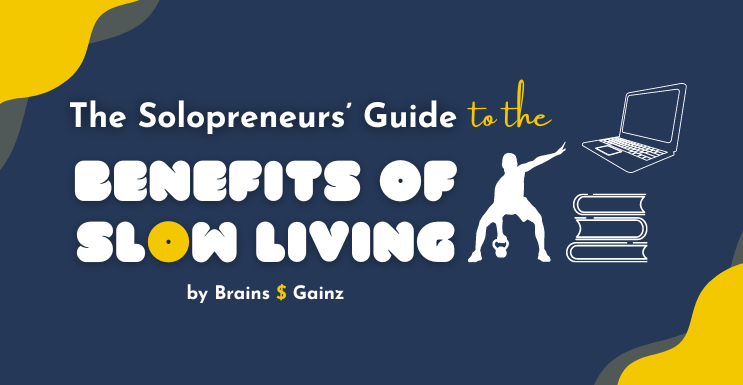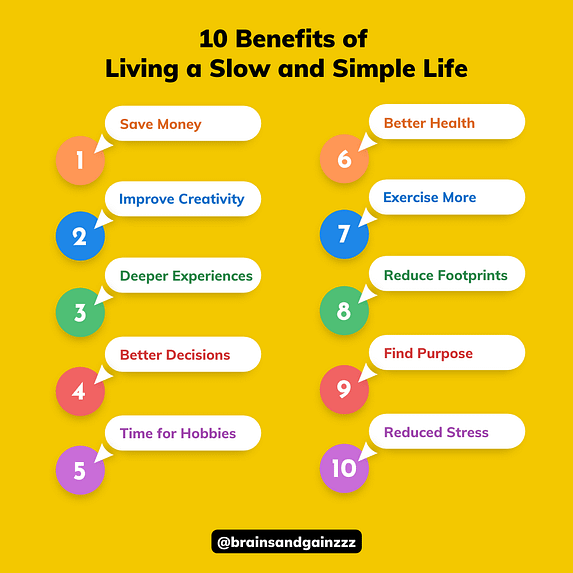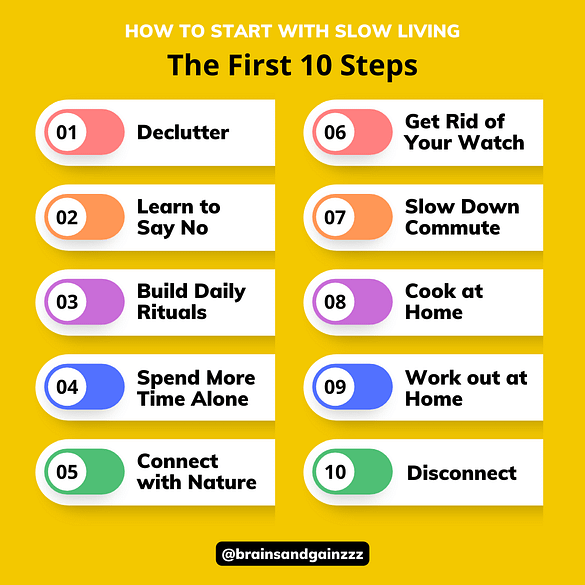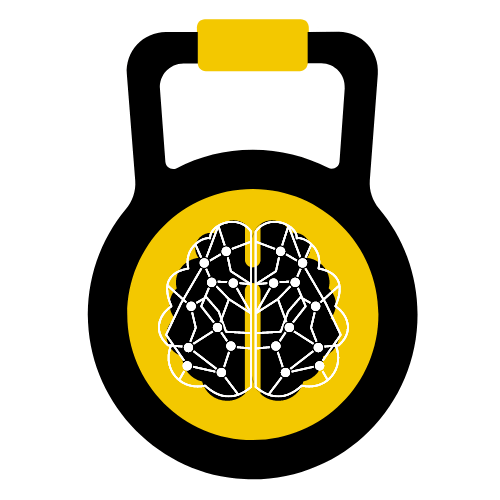Early in my twenties, I believed that staying busy was an act of showing how engaged in my life I was.
How many important things I had to do and I was doing. I believed that busyness was the best way to fill each minute of my life.
At one very distinctive point in my life, I consciously embraced minimalism. That was when I realized that busyness had nothing to do with a happy and fulfilled life.
I searched my heart and found the beauty of living a life with its own rhythm. Eventually, I discovered an entire community that was Slow Living. That was just around my 27th birthday.
It was a pivotal period in my life because slow living has completely shifted my perception of time, productive work, quality meals, and effective workouts.
Slow living is not about living like a snail. It means doing everything at the right speed—fast, slow, or whatever pace delivers the best results. And six years later, slow living is the rhythm of my life.
After my 30th birthday, I quit my 9 to 5 job. I had a great run in the tech startup world, but it was time to embrace another path.
I quit my job to be on my own terms and became a solopreneur. As a solo founder, I had to deal with a tremendous amount of work.
But as with everything in life, “there is a time for being ahead, a time for being behind; a time for being in motion, a time for being at rest; a time for being vigorous, a time for being exhausted; a time for being safe, a time for being in danger.”—Lao Tzu.
Thanks to the previous years of slowly transitioning my busyness into slow living, that lifestyle prepared me for all the obstacles and down moments I had as a solopreneur.
This post explains how—you—the solopreneur, entrepreneur, athlete, busy parent, or busy hustler, can shift from living fast and busy to living slow, healthy, and present life.
Never, ever forget that this life offers options, and it is up to you to choose the healthiest option for you.

What Is Slow Living?
Slow living is a mindset where you choose to actively create the life you want, rather than passively consuming the life we are taught from a young age we should have.
Slow living isn’t about losing time by going slowly; it’s about gaining time by doing the things most important to you. Slow living is about the modern art of living—why and how to live.
In a fast-paced world, you tend to take a superficial approach to life, but when you slow down, you begin to engage deeply with whatever you are doing.
Also, you have to confront what’s going on inside you – which is why I believe we have such a difficult time slowing down.
As a result, speed becomes a form of denial—a way to get away from more profound problems. Instead of focusing on who we are, we become superficial to-do lists masters.
What Slow Living Isn’t?
A common misconception about slow living is that it implies we do everything slowly. In reality, it is about slowing down to switch off our constant autopilot state.
As a result, we have the headspace to prioritize what’s essential and allocate the appropriate amount of time for each task or activity.
You don’t have to move to a cottage in the middle of the mountains of Nova Scotia and start canning your food in order to practice slow living.
Slow living has the advantage of being easily implemented anywhere by anyone.
The practice of slow living can bring more meaning to your life, whether you’re a solopreneur, entrepreneur, stay-at-home parent, busy executive, professional athlete, or something in between.
Let’s explain the most common misconceptions about slow living.
- Slow living doesn’t mean being lazy. Slow living is about doing and creating what matters the most without rushing life.
- Adopting a slow life doesn’t mean you can’t be successful or productive. Instead, it’s about choosing your definition of success and prioritizing the things that matter most to you. It’s about saying NO more often than saying YES to everything.
- Slow living does not mean giving up technology. The goal is to ensure technology serves us rather than distracts us and acknowledges the need for screen time in the digital age.
- A slow lifestyle isn’t limited to those who live in the country. A slow lifestyle can be adopted by anyone, regardless of whether they live in a bustling city or a quiet town.
- Finally, slow living is not a quick fix for our busyness. It’s a mindset shift that takes time and will constantly evolve as your priorities change.
History of the Slow Movement
The Slow Movement is a global trend that started in Italy in the 1970s. The idea behind the movement was to create a lifestyle that is less stressful and more fulfilling, where people can live at their own pace.
The Slow Movement in Italy started with one event – the opening of McDonald’s in the heart of Rome.
As an answer to that event, a group of activists led by Carlo Petrini created Slow Food, a movement aimed at preserving regional food traditions.
In 2004, Carl Honoré published his book In Praise of Slowness, which helped bring the concept of slow living into the mainstream.
18 years later, slow fitness, slow food, slow working, slow travel, and slow fashion are trending and evolving lifestyles. Increasingly, people recognize that faster is not always better.
Does Slow Living Mean Living Slow?
No, slow living doesn’t mean living slow or moving slowly as a snail. Slow living is acknowledging and embracing your life’s rhythm and living according to it.
There will be times when you will sprint and times when you will walk.
Can Solopreneurs and Entrepreneurs Experience the Benefits of Slow Living?
Yes, solopreneurs and entrepreneurs can have a slow living lifestyle while staying highly productive and successful.
With the right mindset and habits, you will have the time to achieve and do what matters the most to you.
I Am a Busy Parent Raising Kids, Can I Experience the Benefits of Slow Living?
Yes, you can experience the benefits of slow living even as a busy parent.
Slow living has expanded into different areas of modern life—slow parenting, slow fashion, slow money, slow gardening, slow travel, and many more.
Slow living is the umbrella concept that covers all of the sub-areas of our lives. Parents can only benefit from adopting slow living.
10 Benefits of Living a Slow and Simple Life
I’ve selected the most important benefits we can experience when we give up on our artificial busy lives.
- Saving Money
- Boosting Creativity and Productivity
- Having Deeper Experiences
- Making Better Decisions
- Having More Time for Side Projects and Hobbies
- Improving Your Health
- Naturally Exercising More
- Reducing Your Environmental Impact
- Finding Fulfillment and Purpose
- Being Less Stressed and Anxious

1. Saving Money
Rather than spending money on the latest fashion trend, you should consider visiting your local thrift store or buying a handmade piece that will last for many years.
I often buy my fitness clothes from local thrift stores. They cost me a fraction of their retail price. Save money on equipment and use what’s saved for hiring an instructor to try another sport, for example.
Instead of rushing out to buy the latest PC model because you think it will make your work faster (which is a fallacy), save that money to follow a dream.
You can quit your job and start your company, secure your children’s education, buy a home, or go on a slow travel sabbatical.
Besides saving money directly, slow living can help you live a healthier lifestyle, which is another way to save money. As a result, your health improves, you experience fewer illnesses, and you experience less stress.
You’ll be more motivated to work on the project you love, pursue your dreams, start a business, or achieve other financial goals.
2. Boosting Creativity and Productivity
Despite the illusion that multitasking increases productivity, it often does the opposite. Busyness keeps you from getting more of the important things that must be done.
Mental clutter is a symptom of our modern way of life and can stifle us. When you slow down, you can concentrate on a task more efficiently and achieve better results.
Similarly, according to psychologists, stress kills creativity. When you’re distracted and on alert, it’s hard to be creative. Now you know why most artists embrace slow living.
3. Having Deeper Experiences
Slow living can give you a greater sense of enjoyment and appreciation of life.
It’s easier to find joy and fulfillment in the present when you have the time and space to pay attention to what you’re doing.
As a result, you will have a richer experience and deeper relationships.
4. Making Better Decisions
Making better decisions is another benefit of slow living.
When you respond to a situation deliberately rather than constantly reacting and moving on to the next activity, you think carefully about the final choice you need to make.
By doing so, you can make decisions that are more aligned with your values.
5. Having More Time for Side Projects and Hobbies
There is one thing in life that we cannot get more of—time. Our lives slip away all too quickly when we’ve crammed our limited time with too many activities.
When you don’t see a margin of time in your schedule, it’s hard to be creative, forgiving, and perseverant.
You have to create space for the things that matter the most to you – side projects, creating your company, raising a happy family, or nurturing a solid relationship.
Slow living isn’t about losing time by going slowly; it’s about gaining time by doing the things most important to you.
6. Improving Your Health
Living a slow and simple life reduces stress and anxiety because you can finally focus on what’s important to you.
People suffering from mental health can only improve their health by embracing a slower life.
Muscle tightness, headaches, aches and pains, and gastrointestinal symptoms may disappear as your stress melts away.
The days aren’t as hectic, so you’re not as tired all the time. As you’ve embraced a slower pace of life, you realize how vital downtime is.
There are ways to prevent burnout, as well as chronic health problems like high blood pressure. As a result, you’ll eat less fast food since you won’t be living out of your car.
Taking time to enjoy your meal is one way to practice mindful eating. Taking your time while eating can enhance the eating experience and prevent overeating if you listen to the sensations of your body.
The slow food movement advocates for reducing the use of processed foods. People can benefit from returning to more whole and healthful foods.
Cooking enthusiasts may find this a great fit as you have more time to cook and prepare your meals. In summary, living a simple life offers mental and physical benefits.
7. Naturally Exercising More
You’ll exercise more if you walk or cycle to work, the store, or even around the block instead of driving.
Your desire to move will increase as you become fitter. For example, I gave my car to my father, and now I live in the city without a car.
This means that, naturally, I will have to walk and bike more.
8. Reducing Your Environmental Impact
By slowing down, you become more aware of the negative impacts of our fast-paced lifestyle on the environment.
Slow living goes hand-in-hand with living eco-consciously.
9. Finding Fulfillment and Purpose
Making time for what matters most to you can lead to a more purposeful lifestyle by placing your values at the center of your lifestyle and making time for what is important to you.
You will reach that point where you will no longer seek a “work-life balance;” instead, you will find your life rhythm.
10. Being Less Stressed and Anxious
When you rush through one thing after another, you end up feeling anxious rather than getting more done. Slowing down relieves stress.
You will find that your mind is clearer and can focus better when you slow down and intentionally enjoy life.
It is easy for your mind to become cluttered with distractions when you constantly do one thing after another. Being in the moment allows you to focus more on what’s important.
How Can You Tell if You Are Ready for the Transition to Slow Living?
A slow way of living is more rewarding, but in today’s world, it requires conscious effort.
Trying to live up to an Instagram-worthy life of perfection can be all too easy when you say yes to everything.
Being busy all the time with a to-do list is promoted more frequently in our society as a good thing than rest and relaxation.
However, this goes against the many benefits we’ve discussed regarding living a simple life. Don’t forget that you can be active and productive while living a slower and more meaningful life.
It is not necessary to abandon everything to live a simple life. Start prioritizing unscheduled time, eliminate the thought of multitasking, and declutter your possessions.
Saying no to things that don’t belong in your life is within your power. To start, you might look at your media consumption and evaluate whether it is a good use of your time.
Begin to appreciate the little things in life and be grateful for them. Get accustomed to being still and relaxed.
Each day, make decisions that will enable you to slow down; over time, your life will become simpler and hopefully more enjoyable.
Simple living isn’t a cure for all stress, but it can help you in many ways.
How to Start with Slow Living: The First 10 Steps
There isn’t a single solution that easily applies to everyone when you want to start with slow living.
But there are common areas in our lives among us, and you can start with them.
This is how I started six years ago with slow living.
- Donate, Gift, Throw Away Stuff, and Declutter
- Learn to Say No
- Build Rituals Into Your Day
- Spend More Time Alone
- Connect with Nature
- Get Rid of Your Wrist Watch
- Slow Down Your Commute
- Cook at Home
- Work out at Home
- Disconnect

1. Donate, Gift, Throw Away Stuff, and Declutter
Having an easier-to-manage home is the first step to a slower, easier life. Your mind will feel cluttered and messy when your house is cluttered, messy, and full of material stuff.
Get rid of everything you don’t need, want, or use. Donate clothes and shoes. Gift your tech gadgets, which you have never used, to your friends.
Organize your home so that everything has a place. With each item in its place, cleaning up becomes much simpler and faster, allowing you to focus on other tasks.
2. Learn to Say No
If there is one takeaway you should remember from this guide: SAYING NO is your lottery ticket to internal utopia.
Most of the time, we feel pressured to say yes to everything that comes our way.
The more you say yes to others’ requests for your time, the more you’ll feel empty, stressed, and dissatisfied.
Living slowly means saying NO more often and choosing only what matters most to you.
Get this: when you say YES to something, you’re saying NO to everything else you could do with your time for your dreams.
I love what Charles Poliquin said in one of his interviews “Don’t act like you are a victim.”
If your colleagues ask you to go out with them, don’t say, “I don’t know, I am not sure if I will have the time because I want to finish my side project.”
Just tell them affirmatively, “I don’t go out on weekends.” Period. You don’t have to explain why. Just say that NO, and the convo is over.
Here is another example. Instead of buying something simply because it’s on sale, say, “I don’t buy things I don’t need.” You hear this (talking to yourself). “I don’t buy things I don’t need.”
You will notice how that behavior positively changes your mindset and desire when you use affirmative words. It’s pretty empowering.
I remember how years ago, when someone offered me something sweet or unhealthy at work to eat, I would say, “Thank you, but I shouldn’t eat it because I am on a diet.”
Because I didn’t want that person to feel bad (who would anyway?), I was explaining myself. Today I say, “I don’t eat sugar, I don’t do breakfasts, I don’t eat fruits, I don’t eat salad.” Period.
If they ask me why, I don’t explain, “I am a carnivore, that’s why.” I would answer back – I just don’t eat these types of food. And the convo usually ends there.
3. Build Rituals Into Your Day
Creating morning and evening rituals can help slow down your day. Taking a few minutes to slow down every day can help you reconnect with yourself.
The most important thing is to start a morning ritual for yourself. For example, you could begin your day with an hour of reading a physical book while sipping your favorite morning drink.
Then write the number one thing you most want to accomplish during the day. This is my morning ritual – a book with a lot of coffee, no matter what day is.
Steve Jobs used to ask himself the following question each morning – “If today was the last day of my life, would I be happy with what I’m about to do today?” If the answer was “NO,” he knew it was time to change something.
Even a simple routine can calm your mind, dramatically improve your outlook for the day, and boost your productivity.
For example, at 17:00, I stop working. From 17:00 to 18:00, I do my workout every day.
Around 18:30, I am back on my laptop to write. Each day, after my workout, I write at least 500 words for brainsandgainz.com.
Two hours before I usually go to bed, I will shut down all screens at home and try to be in the present moment.
These small everyday rituals keep me in line with my goals while having enough time to slow down and do the things I love – reading, training, working on my projects, and being present.
4. Spend More Time Alone
What is the average amount of time you spend alone, without distractions such as your cell phone or television?
Your answer is likely to be “not much.” Spending time alone with yourself every day is one of the most effective ways to slow down.
Take advantage of this time to meditate, be alone with your thoughts, or work toward achieving some of your dreams. Keeping a journal can also help you find your inner voice and slow down your thoughts.
5. Connect with Nature
The best way to connect with nature is to get out and enjoy it through a walk, gardening, or bird watching.
There is an unhurried feel to everything outside, from trees and plants to animals and even ponds. Slow is nature’s way of preparing for the future, so it doesn’t rush through the present.
Being outdoors can teach us a lot, plus it’s an excellent way to have some time for yourself, breathe fresh air, and appreciate everything our earth has to offer.
6. Get Rid of Your Wrist Watch
The first thing I did when I embraced minimalism was to get rid of my wristwatch collection. I used to love wearing watches.
One morning as I was traveling in the subway to work, I noticed that I was checking my watch every minute. I was rushing without the need to rush.
That day, when I returned home after work, I gathered all my watches in a box and put some for sale. The rest I’ve gifted to friends and family.
In Carl Honoré’s book “ In Praise of Slowness,” he writes: “The clock is the operating system of modern capitalism, the thing that makes everything else possible — meetings, deadlines, contracts, manufacturing processes, schedules, transport, working shifts.”
And William Powers writes in his book “The New Slow City” – “Social critic Lewis Mumford called the clock “the key machine” of the Industrial Revolution. But convincing the first industrial workers to abide by the clock was not easy. Many worked at their own speed, took breaks when they pleased, and often simply failed to show up. To teach workers the new time discipline demanded by modern capitalism, the ruling classes set about promoting punctuality as a civic duty and a moral virtue, while denigrating slowness and tardiness as cardinal sins.”
7. Slow Down Your Commute
Even if you can’t completely eliminate your commute, there are ways to make it more productive, peaceful, and enjoyable, so you arrive at work feeling fresh and ready.
Start by turning your commute into a healthy activity. Is it possible for you to walk or bike to work?
If you take public transportation, you can get off a few stops early and walk the remainder of the way; you’ll enjoy the exercise and boost your energy level.
You could also relocate closer to work or find a new job close to home so you can walk or bike to work.
Leaving earlier can also make your commute “slower” and less stressful. By leaving earlier, you won’t feel rushed, and your time will be more flexible.
When you take more time to get to work, you will feel less stressed and in a better mood.
8. Cook at Home
Slow living is a natural extension of the slow food movement, so it only makes sense that cooking at home using healthy, local ingredients is an important part of decelerating your day and living more mindfully.
Cooking at home is also a great way to save money because it’s often far more affordable than eating out. In addition to growing your own produce, you can save money by shopping at a local farmers’ market and only buying seasonal produce.
Cooking at home doesn’t have to be complex. Take a small step at a time and gradually increase your commitment to cooking your meals.
You can use a pressure cooker or slow cooker if you don’t have time to cook in the evenings. You can prepare a healthy, home-cooked meal quickly and easily with these appliances.
Take a break from the computer when you are ready to eat. Sit down at the table and eat from an actual plate. Focus on the taste and texture of the food you’re eating.
Тime magazine rated Slow Food as one of the eighty ideas that shook the world.
9. Work out at Home
Working out at home instead of going to the gym could be a great way to practice slow fitness. One of the main reasons is that you don’t have to rush through your workout, especially when there aren’t enough free weights or machines for all people in the gym.
In such cases, especially when we don’t have much time for working out, we tend to rush our workout, skip exercises, or perform them with bad techniques to move quickly.
I work out only at home, it takes less time, and I have better performance and better results.
10. Disconnect
When it comes to stress, electronics are a huge factor.
Electronic gadgets have become such an integral part of our daily lives that they prevent most people from getting away from them for too long.
We can’t just smash our computers and throw away our phones, but we can put them away every once in a while.
As a result of modern technology, people no longer have to wait for a letter, mail, or file to be hand-delivered in order to move from one task to another.
This means that we don’t allow ourselves downtime between tasks. Learn to take a quick break from all screens – play with your pets or go for a walk.
Why Is Slow Living Important?
Slow living is important because it allows us to enjoy the present moment and live a life that doesn’t revolve around our future. It also allows us to be mindful and appreciate what we have in the present moment.
We are often too engrossed in our future goals or past regrets that we forget to take time off and enjoy the now. Slow living helps us do that by returning to the present moment.
What Are the Best Books on Slow Living?
I’ve read most of the books on slow living and simple life. Here is a list of the ones that had the most impact.
Author: William Powers
Author: Carl Honoré
Author: Carl Honoré
Author: Erin Loechner
What Are the Best Blogs on Slow Living?
My favorite blogs on Slow Living, which I’ve read from top to bottom, are listed below.
What Are the Best YouTube Channels on Slow Living?
My favorite YouTube Channels on Slow Living are listed below.







